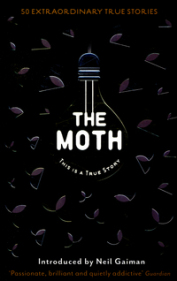
Sometimes someone is so taken with a book that you can’t help but stop and take notice yourself. So when TomCat was full of praise for this impossible crime, it hopped up my TBR pile with the effortlessness of a mountain goat on an escalator. I was promised audacity, and I love a bit of authorly audaciousness where an impossible crime is concerned — indeed, the boldness of such schemes as employed in John Dickson Carr’s The Man Who Could not Shudder (1940) or John Saldek’s Invisible Green (1977) make them firm favourites of mine, and if a book of this ilk has chutzpah enough to make TomCat and John Norris sit up and pay attention, then surely you must be onto a good thing.
So, let’s get it out of the way: I really did not like this book. For so, so, so many reasons, not least because — in much the same manner as Ryan recently highlighted about Agatha Christie’s Hallowe’en Party — so much of the conversation goes like this:
“He was hit on the head?”
“He was hit on the head. We found metal in the wound.”
“You found metal in the wound? But he was hit on the head with a stone.”
“We found a stone that we think hit him on the head, but we found metal in the wound.”
“There is no metal in a stone.”
“There is no metal in a stone, and we found a stone that we think hit him, but there is metal in the wound. We think the metal came from the car.”
“The metal came from the car?”
“As there is no metal in the stone, the metal we found in the wound came from the car.”
“And the stone hit him on the head?”
“The stone has blood on it like it hit him on the head.”
“But you think the meal came from the car?”
“There is metal in a car. As there is no metal in the stone, we think the metal came from the car.”
There is a short story’s worth of plot in here — and a very good short story at that — but the sheer volume of perseveration in proceedings here is unbearable. For a large number of the plot points in this mystery our amateur sleuth sees something, thinks about it, discusses it with the inspector attached to the case, thinks about it some more, then goes away and talks to someone else about it, then writes a journal entry about it, then goes and questions the person involved, and then recaps all the other facts to that point in the story to see how the fit in. One key piece of information is irritatingly not revealed to the police until the 40% mark, but at that point the entire thing is laid bare, and leaves open only one course of action…which is not followed, because then everything would be done in three pages (well, multiplied up for repetition…).
Fundamentally, in spite of the inventiveness of its solution, this represents something of a shunpike on the roads of detective fiction — a cheap and slow route through vistas explored to a far higher standard elsewhere. Oh, I know, I’m a grouch and famously contrary, like I started this blog purely so I can prove how counter-culture I am, but I really hated Fearn’s inability to tell a good story in a compact and interesting manner. Yes, it’s probably quite realistic in terms of the investigation, but given the eventual resolution this would have benefitted from being a lot shorter or a lot more packed with incident. The realist school has no place wrangling with this sort of endeavour — and there’s a good line in some scientific detection — especially as the ingenuity of the solution seems horribly out of place given the hoary, antiquated nature of what precedes it. I have to give Fearn kudos for his method of death, but dammit if it’s just too far out of any sort of field, dale, sward, or common to fit into the way he reaches it.

And this got me thinking — especially on the topic of my much-beloved impossible crime fiction, but generally in the firmament of detective fiction overall — about endings that surprise us in ways both good and bad. The constraints of detective fiction require you to be a least a little prepared for the surprises that cap off a tale, though hopefully looking in the wrong direction, and everyone has an example of one that did or did not work for them. It’s often a fine line, and I’m not sure where the delineation begins, but I thought I’d examine a few of my most and least favourite examples to encourage you to share your own.
Anthony Boucher’s Rocket to the Morgue (1942) is the classic example of this where it doesn’t work for me. It’s important to know that it was originally published under the nom de plume H.H. Holmes, because to explain away the attack on an author in a locked, watched, and inaccessible room he literally has a character go “Oh, yeah, that author Anthony Boucher is capable of thing that the attacker was required to do here, it’s definitely a thing people can do, so that’s fine and dandy”. There’s another novel — I shall not name it, as I’m about to spoil one key mystery — where a man is found crushed dead as if dropped from a huge height, except there’s nowhere nearby that he cold have been dropped from (skip the rest of this if you want to remain unspoiled, though it’s not really worth it): it’s revealed that the killer drove him to a tall building, pushed him off the top, then put the body in their car and drove him back to where he’s found. ‘Awful’ does not begin to cover it.

Some brilliant short stories would have been thoroughly ruined by being stretched out to novels, because sometimes the sheer audacity required to pull something off is better exposed after fifteen pages rather than twenty times that many. Arthur Porges wrote a series of stories about the wheelchair-bound Cyriack Skinner Grey who solves unfathomable cases, and each is a little piece of perfection for the sheer ludicrous nature of their solutions, finding scientific explanations for time-bombs, impossible hiding places, weapons vanishing from rooms without trace…make me wait 80,000 words to get to these answers and I’d doubtless look on them less favourably, but I urge you to check out the awesomeness that is the Grey stories just so see how seamlessly the payoff works even after only scant preparation.
As for longer works where it is achieved successfully, well there’s the aforementioned Carr above, plus the sudden turn into hard science taken in Catherine Aird’s impossible-murder-in-a-church His Burial Too (1969). Arguably Agatha Christie’s The Murder of Roger Ackroyd (1926) has this same audacity to it, too, but it was spoiled for me before I read it, so I find it hard to judge. There’s another book I’m hoping to talk about soon that pulls of its explanation with such panache that I couldn’t sleep for sheer excitement after putting it down — I know, right, how tantalising is that? — but for reason that are reasons I’ll simply leave it for now and add a link here when I post about it.
So, what is audacity in this setting? It’s more than just a surprise, it’s much more having the ability to throw in something so completely unexpected — no mere Least Likely Suspect, who was there the whole time but you were obfuscated away from — that you can’t believe the author went for that as their explanation. And sometimes that will be a very good thing, but sometimes that very good thing will not have been worth the effort of getting there. Thy Arm Alone definitely fulfils this set of circumstances for me, alas, but I’d be curious to know what you think about the cases above and others: is there a stage where audacity jumps the shark/nukes the fridge/turns out to be his secret sister, or is it — as I suspect it always will be — simply subjective and anything goes? And what have you experienced in your reading that rocked you in not a necessarily good way? All thoughts welcome, mainly because mine still feel so scrambled…
~
See also
John Norris @ Pretty Sinister: The killing in Thy Arm Alone is one of the most bizarrely executed and ingeniously planned murders in all of detective fiction. I have yet to read a book employing the same murder method. It is unusual and imaginative ideas like this that make the Maria Black books worth tracking down and reading.
~
I submit Thy Arm Alone for the Vintage Cover Scavenger Hunt 2017 at My Reader’s Block under the category
A Brunette (woman or man).
Share this:
- Share on Facebook (Opens in new window)
- Click to share on Google+ (Opens in new window)
- Click to share on Tumblr (Opens in new window)
- Click to share on Pinterest (Opens in new window)
- Click to share on Reddit (Opens in new window)
Like this:Like Loading...
 Sometimes someone is so taken with a book that you can’t help but stop and take notice yourself. So when TomCat was full of praise for this impossible crime, it hopped up my TBR pile with the effortlessness of a mountain goat on an escalator. I was promised audacity, and I love a bit of authorly audaciousness where an impossible crime is concerned — indeed, the boldness of such schemes as employed in John Dickson Carr’s The Man Who Could not Shudder (1940) or John Saldek’s Invisible Green (1977) make them firm favourites of mine, and if a book of this ilk has chutzpah enough to make TomCat and John Norris sit up and pay attention, then surely you must be onto a good thing.
So, let’s get it out of the way: I really did not like this book. For so, so, so many reasons, not least because — in much the same manner as Ryan recently highlighted about Agatha Christie’s Hallowe’en Party — so much of the conversation goes like this:
“He was hit on the head?”
“He was hit on the head. We found metal in the wound.”
“You found metal in the wound? But he was hit on the head with a stone.”
“We found a stone that we think hit him on the head, but we found metal in the wound.”
“There is no metal in a stone.”
“There is no metal in a stone, and we found a stone that we think hit him, but there is metal in the wound. We think the metal came from the car.”
“The metal came from the car?”
“As there is no metal in the stone, the metal we found in the wound came from the car.”
“And the stone hit him on the head?”
“The stone has blood on it like it hit him on the head.”
“But you think the meal came from the car?”
“There is metal in a car. As there is no metal in the stone, we think the metal came from the car.”
There is a short story’s worth of plot in here — and a very good short story at that — but the sheer volume of perseveration in proceedings here is unbearable. For a large number of the plot points in this mystery our amateur sleuth sees something, thinks about it, discusses it with the inspector attached to the case, thinks about it some more, then goes away and talks to someone else about it, then writes a journal entry about it, then goes and questions the person involved, and then recaps all the other facts to that point in the story to see how the fit in. One key piece of information is irritatingly not revealed to the police until the 40% mark, but at that point the entire thing is laid bare, and leaves open only one course of action…which is not followed, because then everything would be done in three pages (well, multiplied up for repetition…).
Fundamentally, in spite of the inventiveness of its solution, this represents something of a shunpike on the roads of detective fiction — a cheap and slow route through vistas explored to a far higher standard elsewhere. Oh, I know, I’m a grouch and famously contrary, like I started this blog purely so I can prove how counter-culture I am, but I really hated Fearn’s inability to tell a good story in a compact and interesting manner. Yes, it’s probably quite realistic in terms of the investigation, but given the eventual resolution this would have benefitted from being a lot shorter or a lot more packed with incident. The realist school has no place wrangling with this sort of endeavour — and there’s a good line in some scientific detection — especially as the ingenuity of the solution seems horribly out of place given the hoary, antiquated nature of what precedes it. I have to give Fearn kudos for his method of death, but dammit if it’s just too far out of any sort of field, dale, sward, or common to fit into the way he reaches it.
Sometimes someone is so taken with a book that you can’t help but stop and take notice yourself. So when TomCat was full of praise for this impossible crime, it hopped up my TBR pile with the effortlessness of a mountain goat on an escalator. I was promised audacity, and I love a bit of authorly audaciousness where an impossible crime is concerned — indeed, the boldness of such schemes as employed in John Dickson Carr’s The Man Who Could not Shudder (1940) or John Saldek’s Invisible Green (1977) make them firm favourites of mine, and if a book of this ilk has chutzpah enough to make TomCat and John Norris sit up and pay attention, then surely you must be onto a good thing.
So, let’s get it out of the way: I really did not like this book. For so, so, so many reasons, not least because — in much the same manner as Ryan recently highlighted about Agatha Christie’s Hallowe’en Party — so much of the conversation goes like this:
“He was hit on the head?”
“He was hit on the head. We found metal in the wound.”
“You found metal in the wound? But he was hit on the head with a stone.”
“We found a stone that we think hit him on the head, but we found metal in the wound.”
“There is no metal in a stone.”
“There is no metal in a stone, and we found a stone that we think hit him, but there is metal in the wound. We think the metal came from the car.”
“The metal came from the car?”
“As there is no metal in the stone, the metal we found in the wound came from the car.”
“And the stone hit him on the head?”
“The stone has blood on it like it hit him on the head.”
“But you think the meal came from the car?”
“There is metal in a car. As there is no metal in the stone, we think the metal came from the car.”
There is a short story’s worth of plot in here — and a very good short story at that — but the sheer volume of perseveration in proceedings here is unbearable. For a large number of the plot points in this mystery our amateur sleuth sees something, thinks about it, discusses it with the inspector attached to the case, thinks about it some more, then goes away and talks to someone else about it, then writes a journal entry about it, then goes and questions the person involved, and then recaps all the other facts to that point in the story to see how the fit in. One key piece of information is irritatingly not revealed to the police until the 40% mark, but at that point the entire thing is laid bare, and leaves open only one course of action…which is not followed, because then everything would be done in three pages (well, multiplied up for repetition…).
Fundamentally, in spite of the inventiveness of its solution, this represents something of a shunpike on the roads of detective fiction — a cheap and slow route through vistas explored to a far higher standard elsewhere. Oh, I know, I’m a grouch and famously contrary, like I started this blog purely so I can prove how counter-culture I am, but I really hated Fearn’s inability to tell a good story in a compact and interesting manner. Yes, it’s probably quite realistic in terms of the investigation, but given the eventual resolution this would have benefitted from being a lot shorter or a lot more packed with incident. The realist school has no place wrangling with this sort of endeavour — and there’s a good line in some scientific detection — especially as the ingenuity of the solution seems horribly out of place given the hoary, antiquated nature of what precedes it. I have to give Fearn kudos for his method of death, but dammit if it’s just too far out of any sort of field, dale, sward, or common to fit into the way he reaches it.

 Some brilliant short stories would have been thoroughly ruined by being stretched out to novels, because sometimes the sheer audacity required to pull something off is better exposed after fifteen pages rather than twenty times that many. Arthur Porges wrote a series of stories about the wheelchair-bound Cyriack Skinner Grey who solves unfathomable cases, and each is a little piece of perfection for the sheer ludicrous nature of their solutions, finding scientific explanations for time-bombs, impossible hiding places, weapons vanishing from rooms without trace…make me wait 80,000 words to get to these answers and I’d doubtless look on them less favourably, but I urge you to check out the awesomeness that is the Grey stories just so see how seamlessly the payoff works even after only scant preparation.
As for longer works where it is achieved successfully, well there’s the aforementioned Carr above, plus the sudden turn into hard science taken in Catherine Aird’s impossible-murder-in-a-church His Burial Too (1969). Arguably Agatha Christie’s The Murder of Roger Ackroyd (1926) has this same audacity to it, too, but it was spoiled for me before I read it, so I find it hard to judge. There’s another book I’m hoping to talk about soon that pulls of its explanation with such panache that I couldn’t sleep for sheer excitement after putting it down — I know, right, how tantalising is that? — but for reason that are reasons I’ll simply leave it for now and add a link here when I post about it.
So, what is audacity in this setting? It’s more than just a surprise, it’s much more having the ability to throw in something so completely unexpected — no mere Least Likely Suspect, who was there the whole time but you were obfuscated away from — that you can’t believe the author went for that as their explanation. And sometimes that will be a very good thing, but sometimes that very good thing will not have been worth the effort of getting there. Thy Arm Alone definitely fulfils this set of circumstances for me, alas, but I’d be curious to know what you think about the cases above and others: is there a stage where audacity jumps the shark/nukes the fridge/turns out to be his secret sister, or is it — as I suspect it always will be — simply subjective and anything goes? And what have you experienced in your reading that rocked you in not a necessarily good way? All thoughts welcome, mainly because mine still feel so scrambled…
~
See also
John Norris @ Pretty Sinister: The killing in Thy Arm Alone is one of the most bizarrely executed and ingeniously planned murders in all of detective fiction. I have yet to read a book employing the same murder method. It is unusual and imaginative ideas like this that make the Maria Black books worth tracking down and reading.
~
I submit Thy Arm Alone for the Vintage Cover Scavenger Hunt 2017 at My Reader’s Block under the category A Brunette (woman or man).
Share this:
Some brilliant short stories would have been thoroughly ruined by being stretched out to novels, because sometimes the sheer audacity required to pull something off is better exposed after fifteen pages rather than twenty times that many. Arthur Porges wrote a series of stories about the wheelchair-bound Cyriack Skinner Grey who solves unfathomable cases, and each is a little piece of perfection for the sheer ludicrous nature of their solutions, finding scientific explanations for time-bombs, impossible hiding places, weapons vanishing from rooms without trace…make me wait 80,000 words to get to these answers and I’d doubtless look on them less favourably, but I urge you to check out the awesomeness that is the Grey stories just so see how seamlessly the payoff works even after only scant preparation.
As for longer works where it is achieved successfully, well there’s the aforementioned Carr above, plus the sudden turn into hard science taken in Catherine Aird’s impossible-murder-in-a-church His Burial Too (1969). Arguably Agatha Christie’s The Murder of Roger Ackroyd (1926) has this same audacity to it, too, but it was spoiled for me before I read it, so I find it hard to judge. There’s another book I’m hoping to talk about soon that pulls of its explanation with such panache that I couldn’t sleep for sheer excitement after putting it down — I know, right, how tantalising is that? — but for reason that are reasons I’ll simply leave it for now and add a link here when I post about it.
So, what is audacity in this setting? It’s more than just a surprise, it’s much more having the ability to throw in something so completely unexpected — no mere Least Likely Suspect, who was there the whole time but you were obfuscated away from — that you can’t believe the author went for that as their explanation. And sometimes that will be a very good thing, but sometimes that very good thing will not have been worth the effort of getting there. Thy Arm Alone definitely fulfils this set of circumstances for me, alas, but I’d be curious to know what you think about the cases above and others: is there a stage where audacity jumps the shark/nukes the fridge/turns out to be his secret sister, or is it — as I suspect it always will be — simply subjective and anything goes? And what have you experienced in your reading that rocked you in not a necessarily good way? All thoughts welcome, mainly because mine still feel so scrambled…
~
See also
John Norris @ Pretty Sinister: The killing in Thy Arm Alone is one of the most bizarrely executed and ingeniously planned murders in all of detective fiction. I have yet to read a book employing the same murder method. It is unusual and imaginative ideas like this that make the Maria Black books worth tracking down and reading.
~
I submit Thy Arm Alone for the Vintage Cover Scavenger Hunt 2017 at My Reader’s Block under the category A Brunette (woman or man).
Share this:





